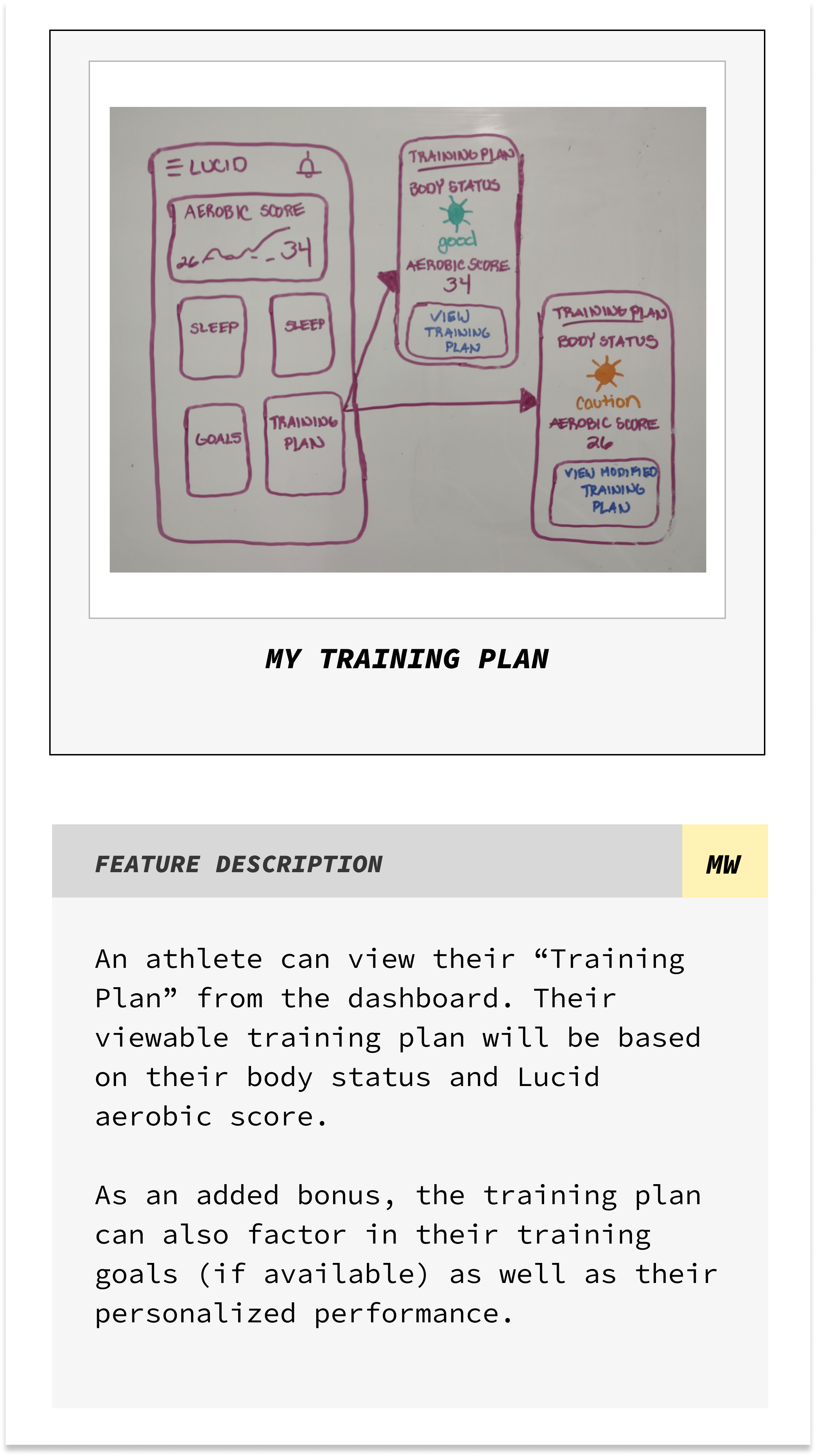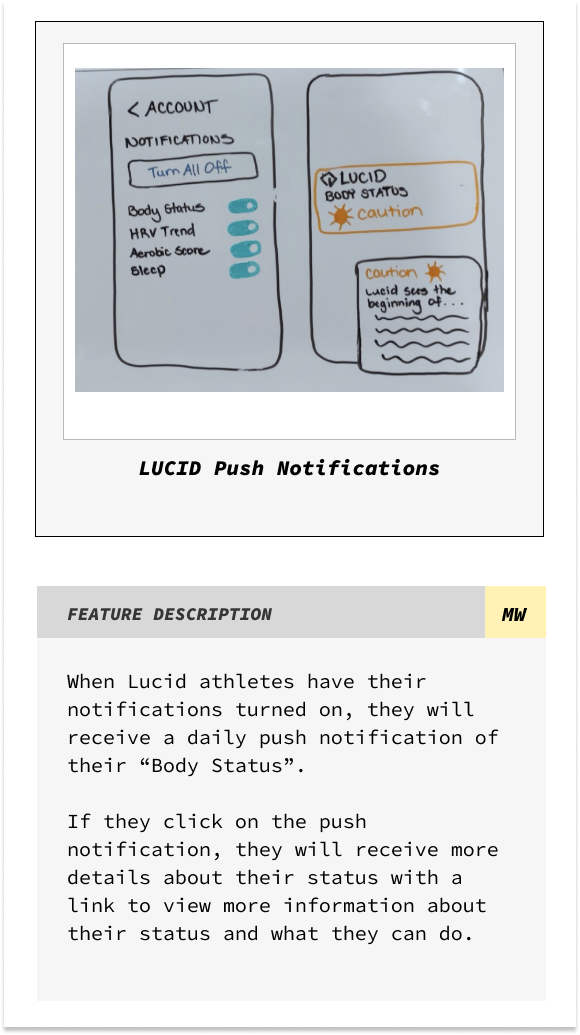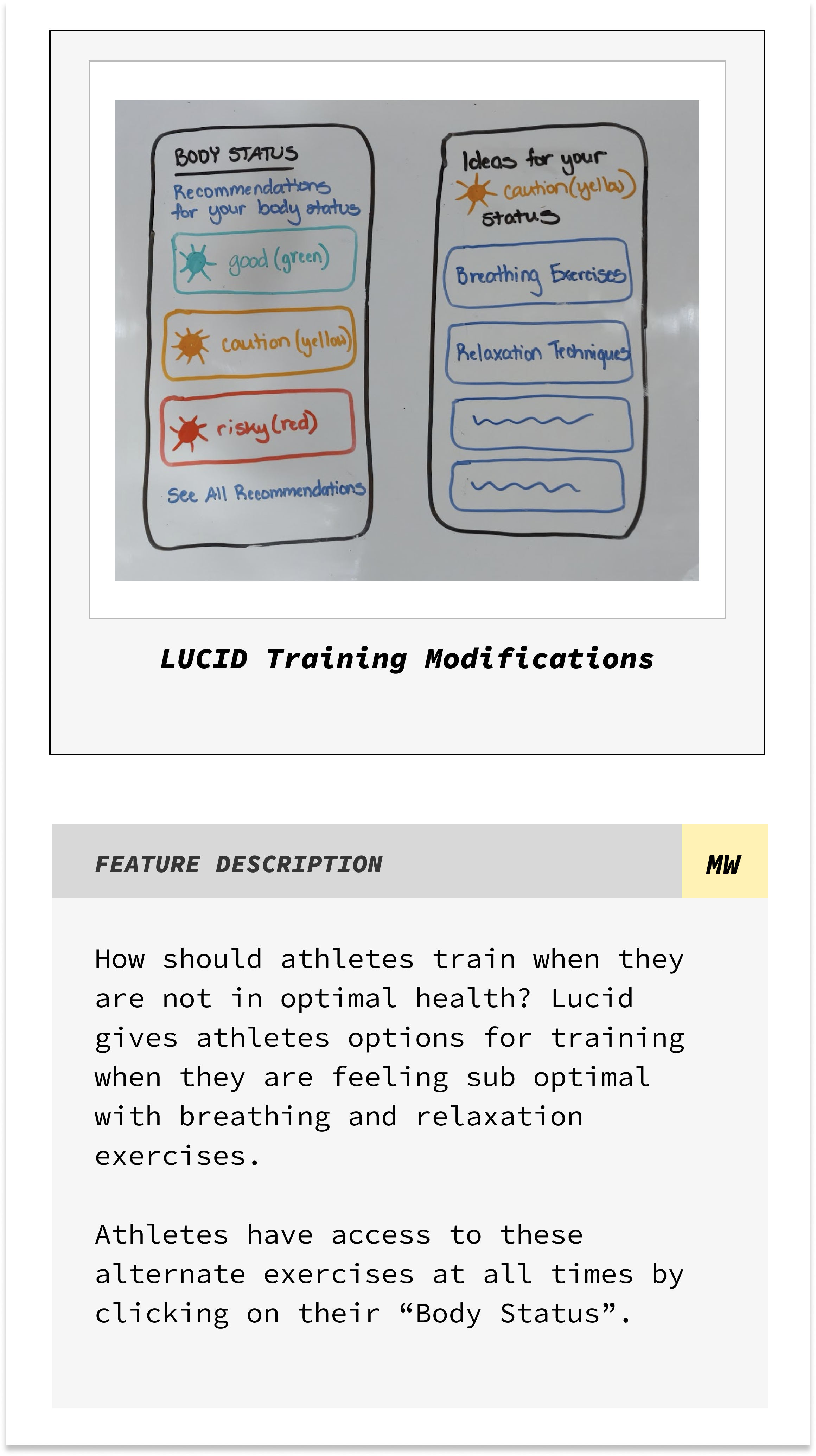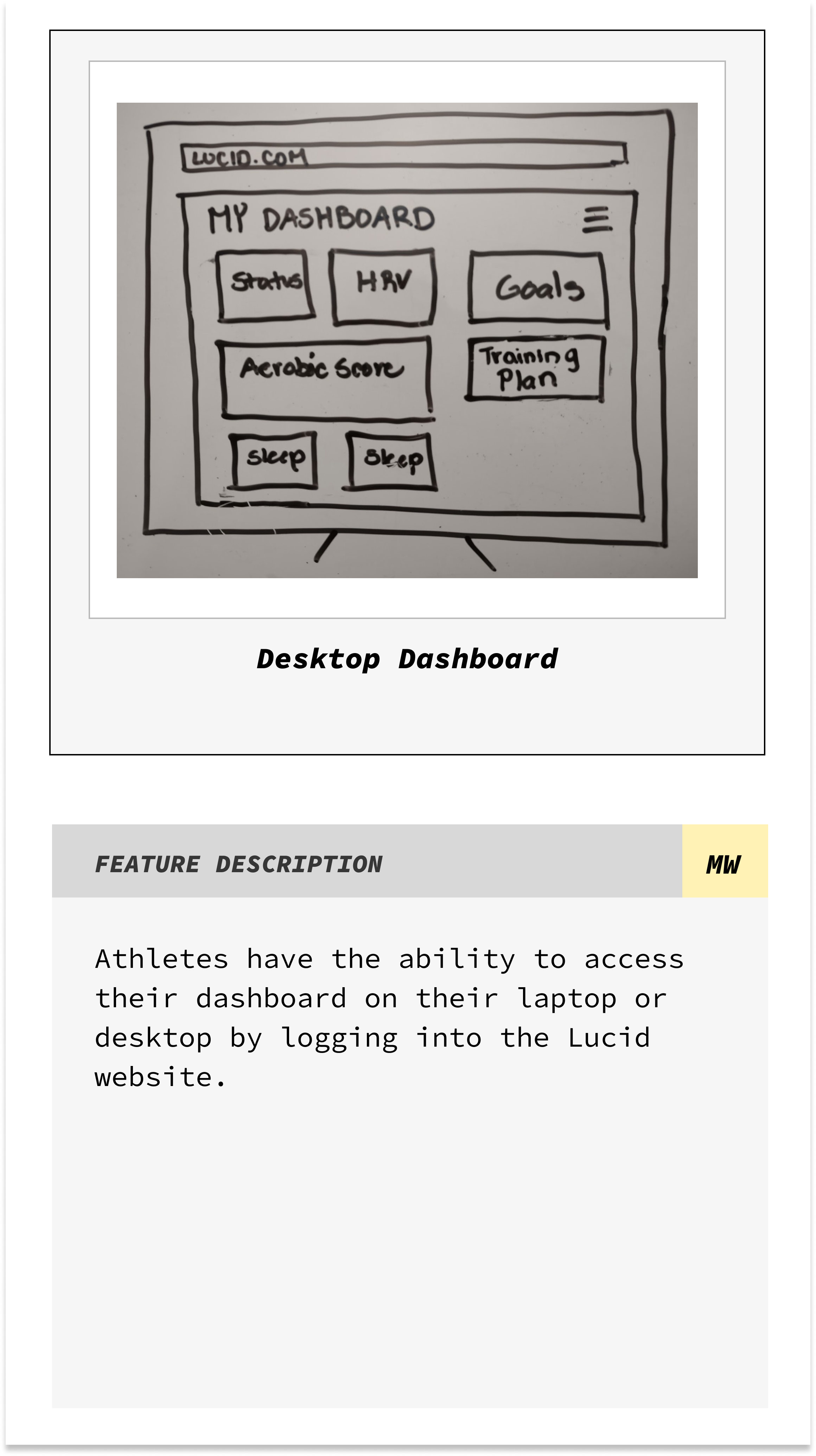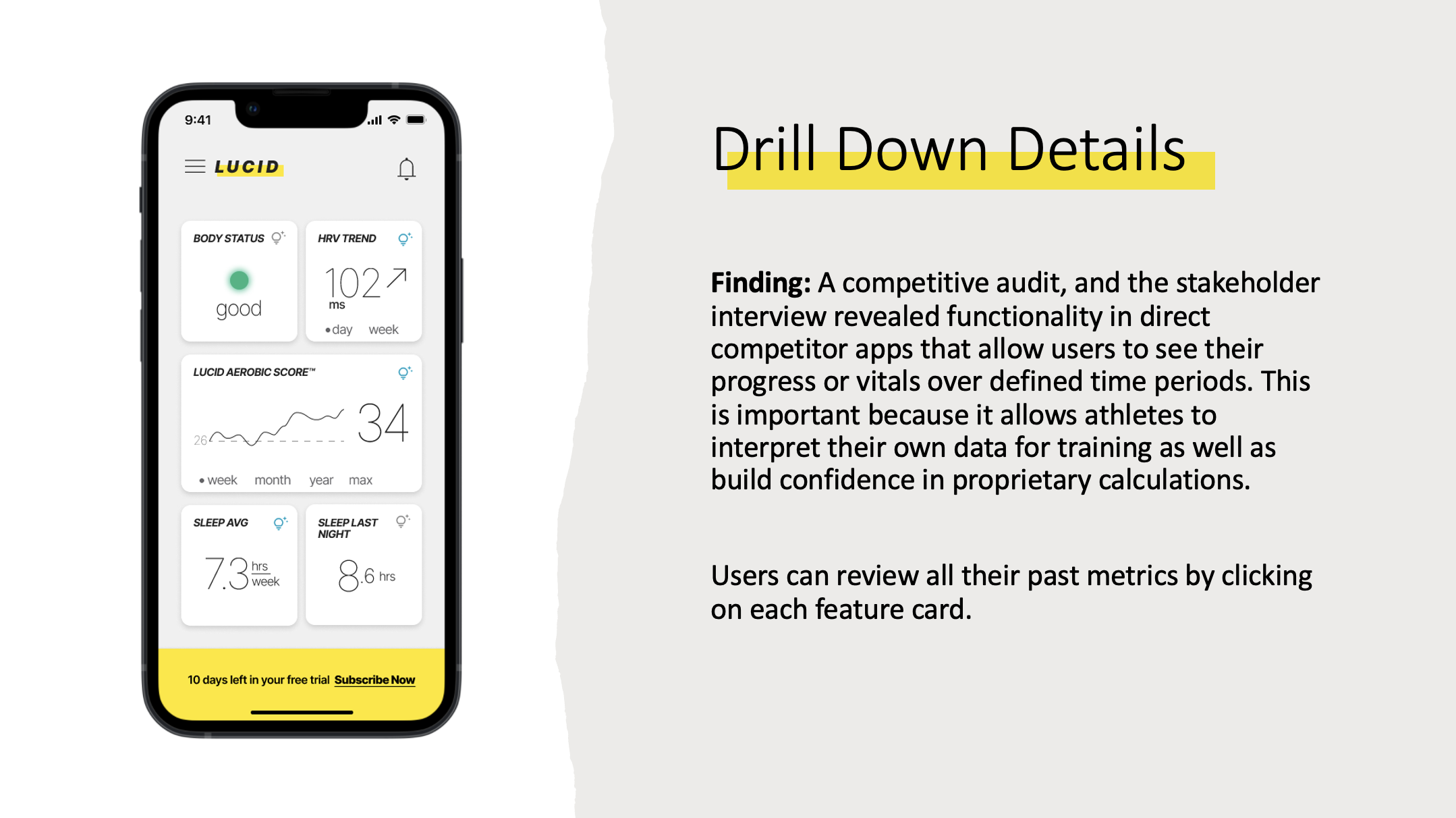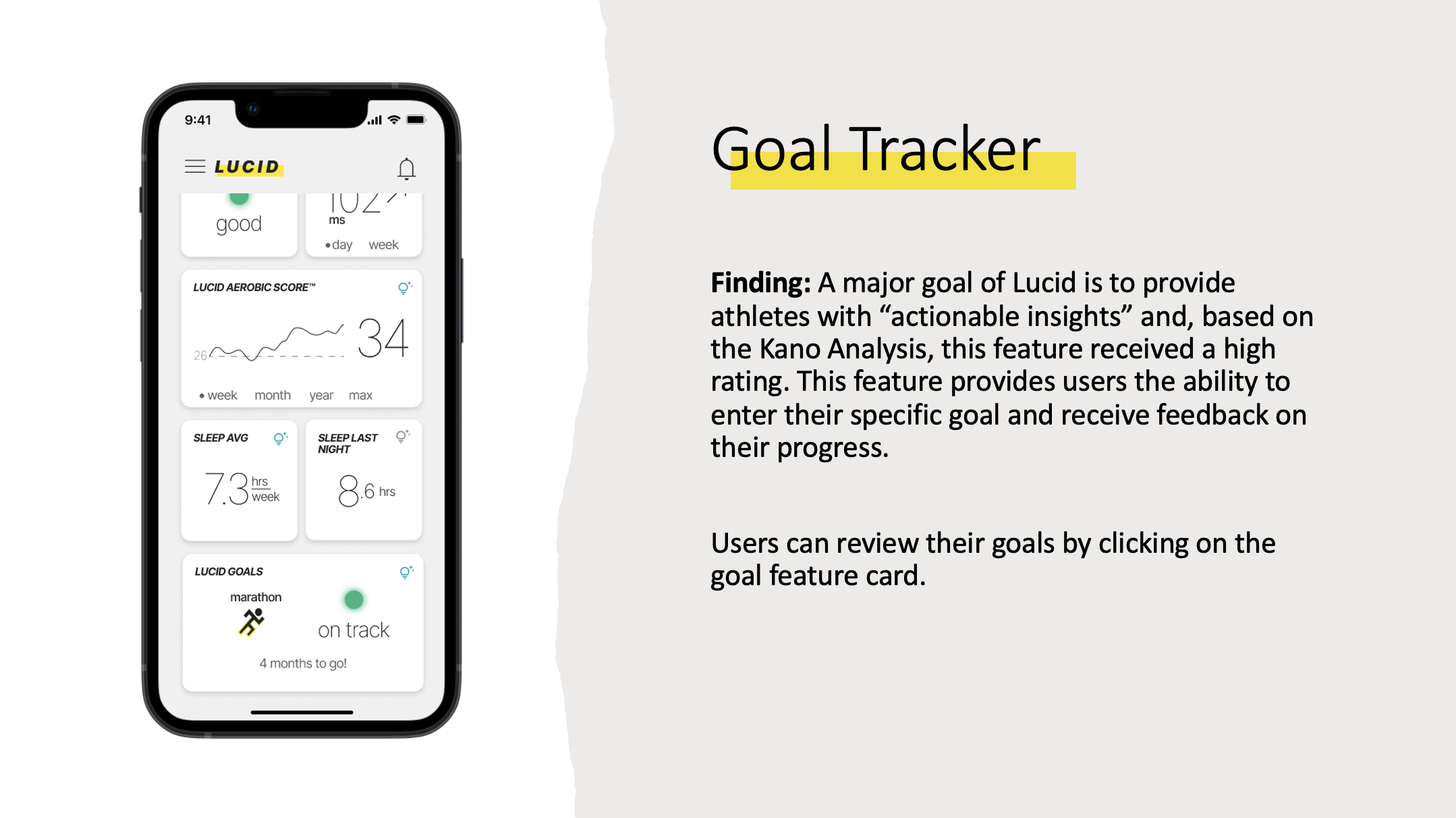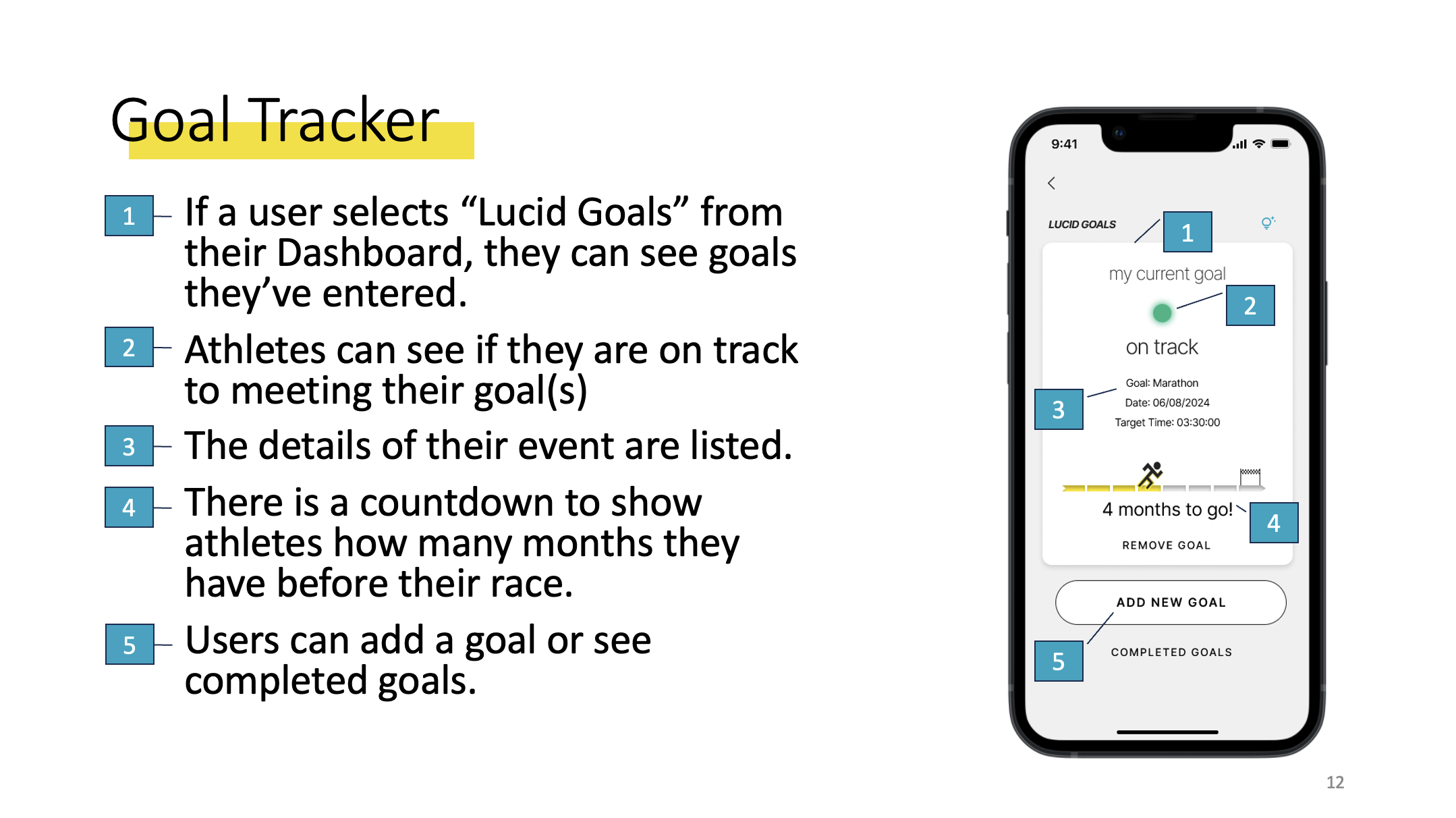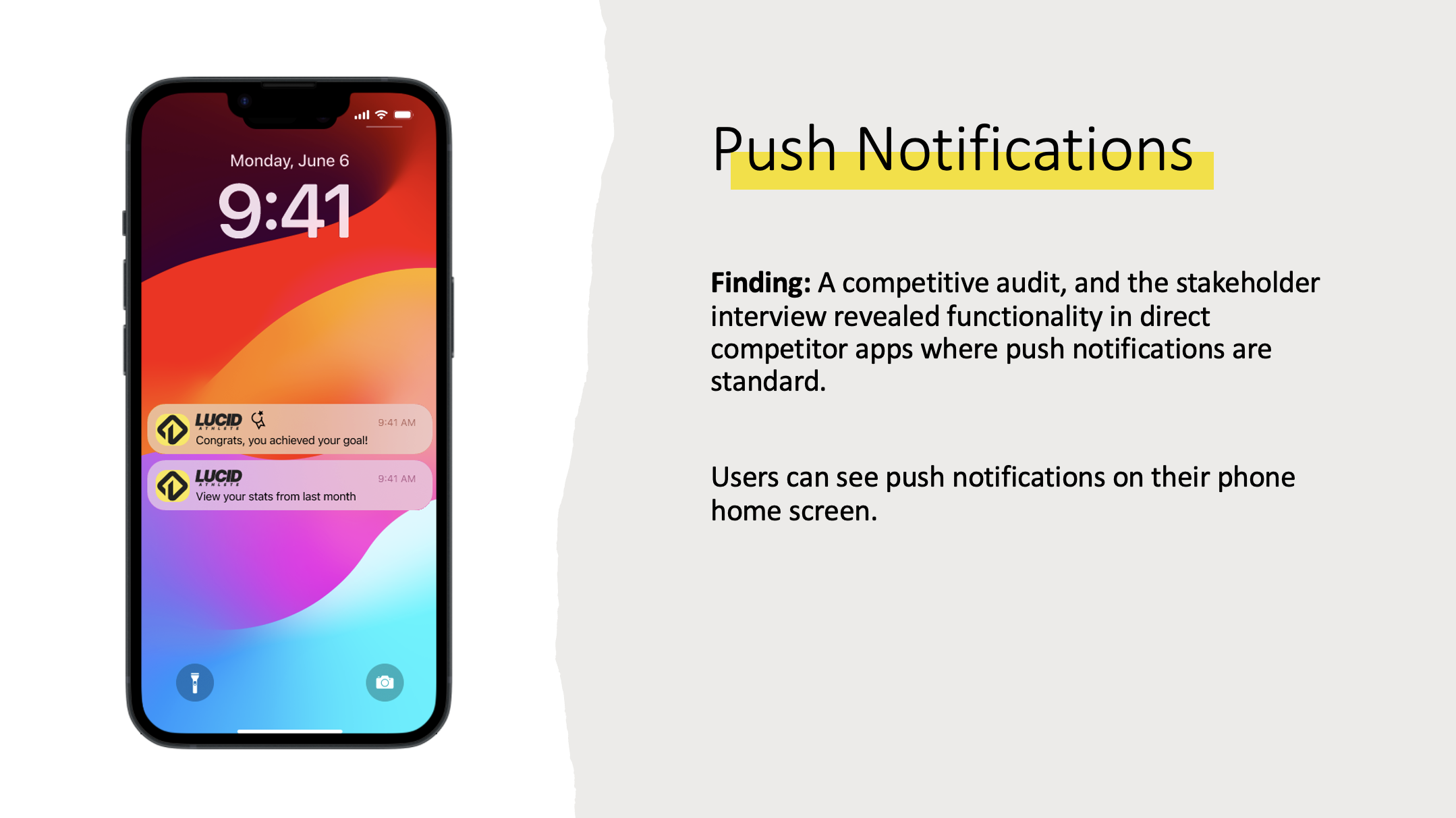Lucid Athlete App Feature Recommendations
A new app designed by and for endurance athletes who want to improve their training for competition and/or well-being.
Client: LUCID Athlete
Role: UX Researcher, UX Designer, & UX Strategist
Methods: Stakeholder Interview, Competitive Audit & Analysis, User Journey Map, Feature Sketches, Feature Cards, Kano Analysis, Rapid Prototyping, High Fidelity Wireframes
Tools: Figma, Google Forms, Google Sheet, Google Docs, Microsoft PowerPoint
Deliverables: Findings & Recommendations Report, User Journey Map, Annotated Wireframes with Recommended Features
The Project
No more gadgets and guesswork!
The new Lucid Aerobic Score provides a key insight, at a glance, for these athletes so they know when to push or pull back their training. Lucid Athlete does all the complicated calculations so these busy athletes can spend their limited time optimizing their training.
The app is in the development stages and stakeholders want to build out additional features to make the app more marketable for endurance athletes. The focus is on prioritizing relevant features, and keeping the app uncluttered.
Research led to the design of 4 proposed feature recommendations.
Current Lucid Athlete App Dashboard
Current Lucid Athlete App Descriptions
The Problem
A stakeholder interview revealed that the Lucid Athlete, which is currently in alpha testing phase, design and development teams have a limited amount of time and resources.
Speed-to market is important for Lucid Athlete stakeholders who want to transition the app from alpha to beta testing. The core of the app provides endurance athletes with unique and proprietary metrics at a glance so they know when to push or pull back on their training. Meanwhile, the design and development teams want to identify and prioritize extra features to make the app comparable to competitors and marketable to time-constrained endurance athletes.
Understanding the Users
During client intake, the stakeholders revealed their targeted user groups:
Primary user group - Millennial endurance athletes who want to focus their limited time on efficient training to support their performance goals or general well-being.
Secondary user group - Endurance athletes looking to level up and maximize their training to support ambitious competition goals.
The following research activities were conducted to gain insight into user experiences with similar apps and expectations for the Lucid app:
Competitive audit of direct and indirect competitors to understand the market.
Journey map to visualize the current user experience based apps available in the market.
Over 100 feature cards were rapidly prototyped by the Design Team to visualize possible ideas. A set of 13 features were chosen for Kano Analysis with 13 participants.
This research identified the level of users expectations, importance, and potential delight associated with possible features.
Hours per week participants spend training
Types of stats participants monitor
User Journey Map
Feature Cards
Pain points from the user journey map, combined with competitive analysis led to the creation of feature cards for kano analysis. Here’s a sampling of those rapidly created features.
Evaluation
During a tech scoping meeting, the Design and Development Teams identified a Fibonacci estimate for each rapidly prototyped feature, prior to the Kano Analysis. The research was analyzed in combination with the development budget of 30 Fibonacci points to reveal key findings.
Direct competitor apps allow users to see their progress or vitals over defined time periods. Providing this detailed information is required to create a minimum viable product and therefor, was not evaluated in the Kano Analysis. It is also important because it allows athletes to interpret their own data for training as well as build confidence in the Lucid proprietary calculations.
A Lucid goal seeks to provide athletes with “actionable insights.” A feature that allows users to enter and track their progress towards a specific goal received a high Kano Analysis rating.
Push notifications are standard in direct competitor apps.
Watch displays are standard in direct competitor apps. Providing this display is required to create a minimum viable product. Users also indicated that they are unlikely to train with the presence of their phone.
Kano Analysis Results
Final Design Solution
The findings led to the design of 4 proposed feature recommendations that maximized the 30 development points. These recommendations were presented in a report to the stakeholders.
Drill down details (14 points with data cache)
Goal tracker (8 points)
Push notifications (5 points)
Apple watch display (3 points)
Feature Recommendations from Stakeholder Report
After implementing the 4 features, focus should be placed on developing additional features that ranked high in the Kano Analysis:
Feeling check-in (3 dev pts)
Location tracker (13 dev pts)
Lactic threshold (5 dev pts)
In addition, implementing a feature that provides training recommendations or plans to endurance athletes would further maximize their training time and continue to set the Lucid Athlete app apart from competitors
Next Steps & Learnings
This project has been an enjoyable experience that has given me an opportunity to grow as a UX Designer. The project challenged me in a couple of ways:
Creating representations of ideas through rapid prototyping.
Understanding the Kano Analysis and learning how to pull actionable insights from this method.
If I had more time to create the wireframes, I would have changed two of my recommendations to align more closely with the Kano Analysis.
Changed the push notification to a feeling check in feature.
Changed the watch display to a lactic threshold feature.
In both cases, the total development points were equal to the feature they would have replaced and would be a more valuable feature for the primary user group.





